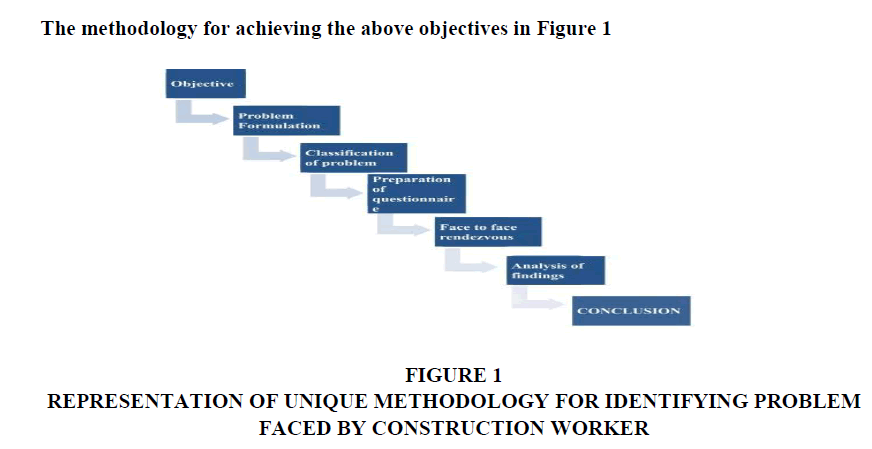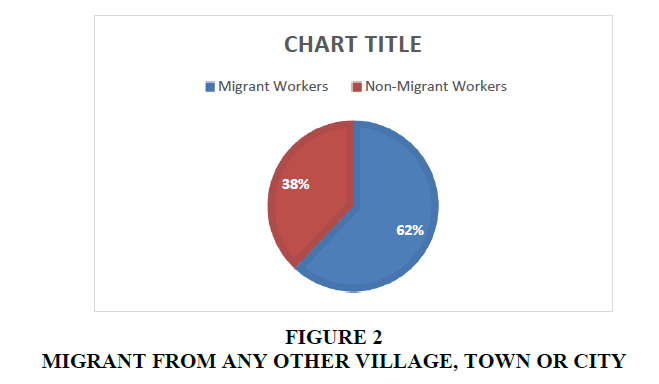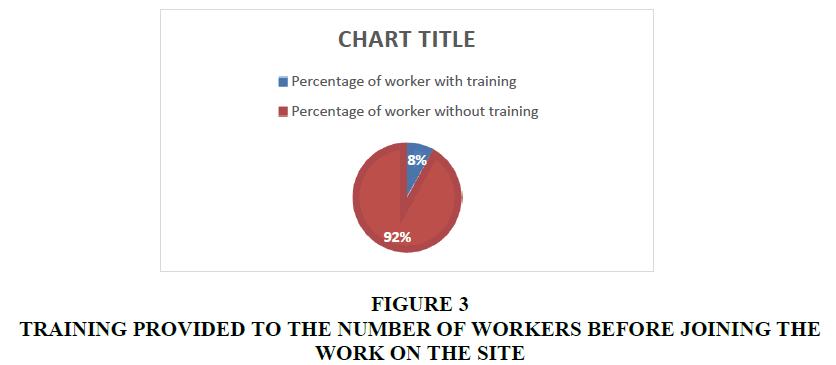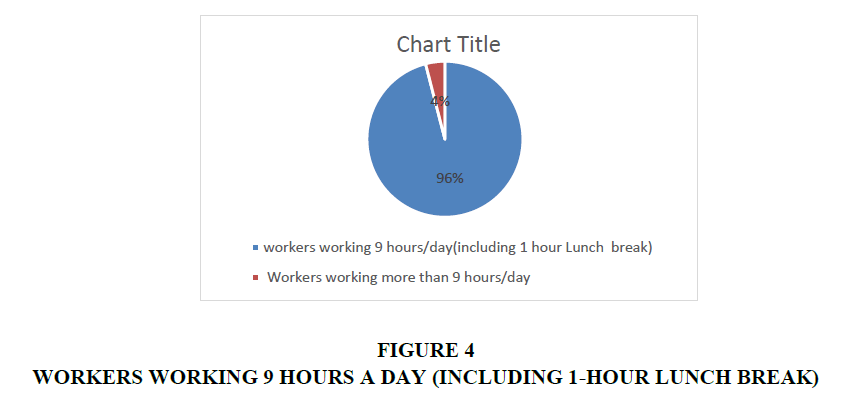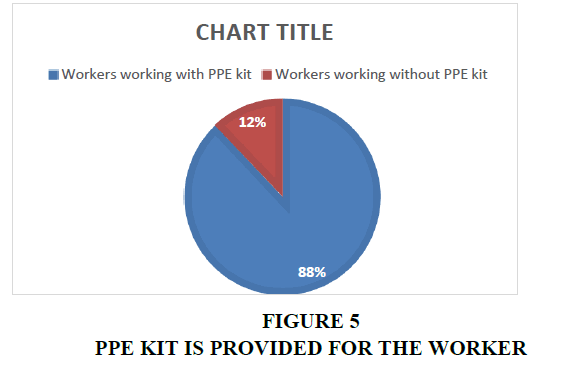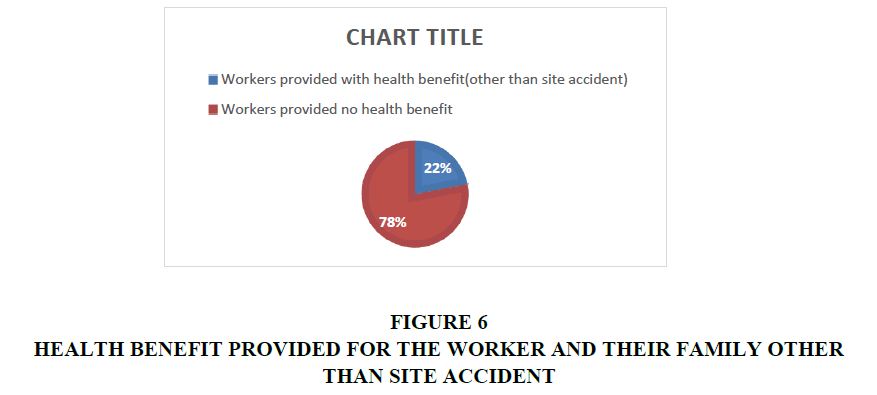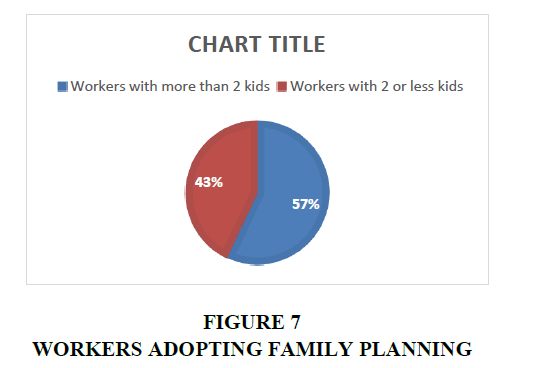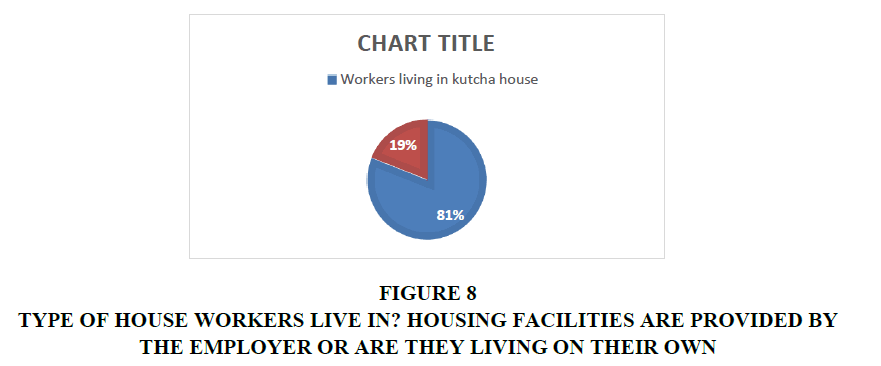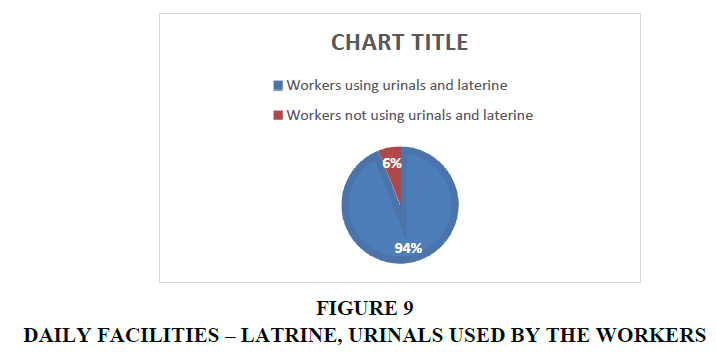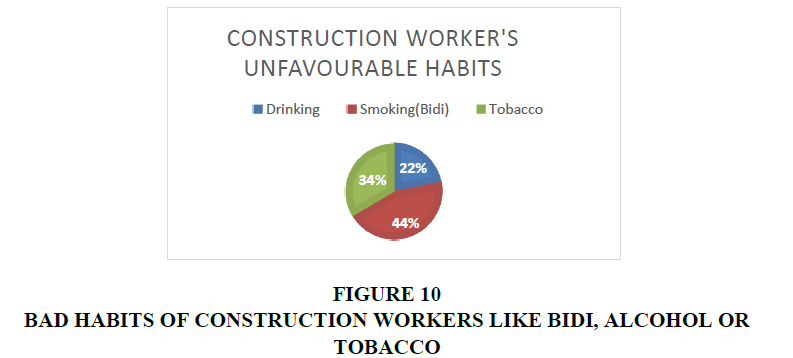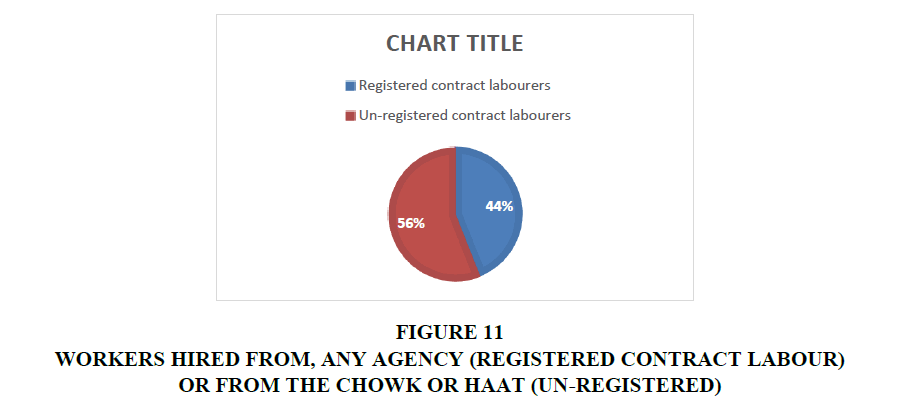Research Article: 2022 Vol: 26 Issue: 5
A Study Highlighting Macro Issues of the Construction Workers in Indore (The Cleanest Indian City)
Sarrah Bharawala, University - Devi Ahiliya Vishwavidyalaya
Citation Information: Bharawala, S. (2023). A study highlighting macro issues of the construction workers in indore (the cleanest indian city). Journal of Management Information and Decision Sciences, 26 (5),1-10.
Abstract
The Indian Construction industry is one of the largest contributors to the annual economic growth approx12. Being a labor intensive Industry, the Indian construction labor force consists of 7.5% of the World Work force, it is a major source of employment for the unskilled laborers in the developing cities of India like Indore. This research focuses on the current problems of the construction workers of Indore city along with the improvement in the conditions of workers mentioned in the prior research effort in this field in the same region. This study was conducted Through Fifty Survey Responses of construction workers that identified physical problems, psychological problems, economic problems, educational level, work environment, lifestyle choices of the construction workers. In this study quantitative technique was used while taking personal interviews from the workers to determine the problems faced by them.
Keywords
Physical Problems, Psychological Problems, Economic Problems.
Introduction
Construction worker means workers who are involved in different processes of construction. Various groups of workers do different types of work on the construction site. According to International Labour Organization (ILO), workers are classified into four categories, they are (Act, 1948).
Unskilled Worker - Unskilled labor refers to work that doesn't require a certain set of skills or formal education.
Semi-Skilled Worker - Semi-skilled worker is the category that requires certain abilities and training beforehand, but not advanced education or specialized skill.
Skilled Worker - A skilled worker is any worker who has special skill, training, knowledge which they can then apply to their work (Chellappa & Salve, 2022).
Highly Skilled Worker - Highly skilled labour is generally characterized by advanced education (college and higher), possession of knowledge and skills to perform complicated tasks (Mysore, 2019).
The Indian construction industry employs approximately 31 million people and is the country’s biggest employer after agriculture (Construction Industry Development Council despite such a large number, construction workers in our country are still unorganized, underemployed, educationally backward and socially inferior. They constitute unorganized labor and are characterized by a temporary relationship with their employer due to which they have lack of safety and health measures, casual nature of employment, prolonged and uncertain working hours, and inadequacy of basic amenities and welfare facilities. There are many legislation clauses providing safeguards for construction workers in India. Construction safety has been made legally enforceable after the enactment of the Building and Other Construction Workers (Regulation of Employment And Conditions of Service Act in 1996) and (The Central Rules in 1998).
Literature Review
The main element of all the construction industries are workers. They come under the category of unorganized sector and are contract laborer. The unorganized sector workers have no formal employer-workers’ relationship and suffer from cycles of extreme seasonality of employment (Tiwary et al., 2012). Due to this type of employment there are many problems faced by construction workers these problems are explained (Chellappa et al., 2021).
Physical Problem- Health and Safety issue of construction workers
Construction workers’ health and safety (CWHS) has the major social responsibility. Achieving zero accidents at construction sites around the world is a challenging task. Nearly 60,000 fatal accidents happen globally each year at construction sites (International Labour Organization (ILO), the death rates in the construction sector are significantly higher compared to other industries in India. The average frequency rate of fatal accidents (FAFR; incidents/1,000 employees/year) for construction industries in India is 15.8. In India effective safety construction management is not available. The strict guidelines and standards are not implemented for proper safety execution (Choudhary et al., 2021). The best way to protect workers against hazards is to control problems at the source. To avoid many kinds of risk and hazard at work is to use PPE kit by the workers and proper training of the workers which is not given as per requirement of the construction site (Joshi et al., 2012). There are many efforts taken by the Government for Safety and health measures. There are two major pieces of legislation governing health and safety law they are:
• Building and Other Construction Workers (Regulation of Employment and Condition of Services) Act 1996 (Saxena, 2009).
• Building and Other Construction Workers (Regulation of Employment and Condition of Services) Central Rules 1998.
Health issues are also a big problem in construction workers, other than any accident on site, no other medical facility is provided to the workers and their family members. Also they have many bad habits like smoking bidi, consuming alcohol and tobacco. Health and safety welfare measures have also been included in some acts and social security schemes framed by different governments (Tesla, 2018).
Economic Problem Minimum Wages of Construction Workers
The minimum wage is directly linked to the standard of living of any worker. The basic minimum wage allotted by the Government to the construction as per the guidelines of construction worker is mentioned in Table 1.
It’s been observed that the wage of a worker is directly and indirectly related to many other problems like housing, recreation and all other basic expenditure.The daily wages of the workers are improved by many government and social efforts, there are laws that regulate contract labor and their wages in India there are:
• Contract Labour Law (Regulation and Abolition) 1970
• The Minimum Wages Act 1948
Physiological Problem – Quality of life
Quality of life is different from the concept of standard of living, which is based primarily on income. Instead, standard indicators of the quality of life include not only wealth and employment, but also the mental and physical health, education, social belonging and recreation and leisure time Raval (2018). The focus on quality of life of construction workers in India is not taken into consideration. Due to the temporary relation of the worker with their employer, after work life of the worker is not considered important (Thakurta, 1972).
Research Methodology
The methodology for achieving the above objectives in Figure 1
Findings
This specific study monitors the quantitative method through questionnaire. The questionnaire is prepared in English but translated and simplified in Hindi while asking for the relevant answers the questionnaire focuses on the various problems faced by the workers during their day to day life (Selvam, 2018). The collected data were from the primary field source. Data were collected from hundred respondents by personal interview. The questionnaire prepared for personal interview for identifying the problems and getting the answers are as follows:
1. Name of the construction worker.
2. National ID (Adhar card number).
3. Migrants from any other village, town or city.
4. Any kind of training or instruction provided before joining the work on the site.
5. How many hours a day they work on the construction site.
6. PPE kit is provided for the worker or not.
7. Is there any health benefit provided for them and their family other than site accident?
8. How many kids do they have (this question was asked regarding family planning)?
9. What type of house do they live in? Onsite or offsite.
10. Daily facilities – Latrine, Urinals used by the workers.
11. Do they have any bad habits like Bidi, Alcohol or tobacco?
12. Where are they hired from, any agency (registered contract labour) or from the chowk or haat.
Main Findings
Construction industry is deficient in providing the basic facilities and safety measures to the workers on the site.
Particularly, the group of workers working with the mixture cement, (Concrete) of sand, water and granite metals to build moldings to buildings, houses, bridges, etc. There are various physical, mental and financial problems faced by the workers. After asking the questions through a personal interview by visiting various sites the results are derived which are represented by using a pie chart for each question Figure 1.
Figure 1: Representation Of Unique Methodology For Identifying Problem Faced By Construction Worker.
As per Figure 2, more than 60% of workers in the construction industry are migrants. The reason for more migrant workers is, unskilled and semi-skilled workers find it difficult to get jobs within their native place, so they migrate from their village to the urban region in search of their daily job Figure 3.
As per the survey, maximum number of workers (more than 90%) does not any receive any kind of training on the construction site. Most accidents on constructions site is because of lack of proper training, as construction is an industry that requires working at ever-changing locations and work environments and the workers are not permanent and are mostly are on per day contract, therefore to reduce the cost and time proper work related training is not provided to the workers Figure 4.
As per The Factories Act 1948, the maximum number of working hour is 9 hours including lunch hour. As per the survey, due to continuous efforts of government, workers in construction industry do not work more than permissible hours without overtime wages Figure 5.
The fatal injury rate for the construction industry is higher than the national average in the unorganized category for all industries. The higher injury rate depicts that proper training and safety precaution are not included in work site including the proper or no use of PPE kit as required (Singh & Misra, 2021). As per the survey, most of the workers are not provided with the safety kit despite of the essential requirement of their job Figure 6.
Due to continues effort of government through Shram Seva, there is steady increase in workers getting health benefits from their employer and also from the government. Government has also launched many schemes providing various health benefits to the registered contract laborers Figure 7.
Various welfare and health awareness activities led by government has increased the awareness of family planning among the workers and their families. There are various benefits provided by the government to the workers adopting family planning. It has observed that family having a son are more likely to adopt family planning Figure 8.
Figure 8:Type Of House Workers Live In? Housing Facilities Are Provided By The Employer Or Are They Living On Their Own.
According to the survey, migrant workers and also some of the non-migrant worker lives on the construction site by making kutcha house on the site itself Figure 9. This reduce their transportation cost and time to daily travel from their native place (Selvam, 2018).
As the cleanest city of India, Indore municipality is taking continues effort to maintain hygiene in the city. The construction of public toilets and urinals in the city is the major step in maintaining the cleanliness. Strict monitoring by municipal authorities coupled with strong action, have encouraged everyone including workers to use the urinals and toilets for their needs if not provided on-site Figure 10.
As per the survey, it’s been observed that a part of earning of most of the workers are wasted in more than one bad habits Figure 11. These habits also affect their health in the long run and because of these habits they cannot fulfil basic needs of their family due to their limited earning.
Figure 11:Workers Hired From, Any Agency (Registered Contract Labour) Or From The Chowk Or Haat (Un-Registered).
As per The Contract Labour (Regulation and Abolition) (Madhya Pradesh) Rules, 1973. every hired construction workers are to be registered and every contractor shall maintain in respect of each registered establishment where he employs contract labour a register in Form XIII also every contractor shall issue an employment card in Form XIV to each worker within three days of the employment of the workers, despite all these regulations it has been observed that there are more than half of the workers working on construction site are not registered under any contractor or are without an employment card.
Conlcusion & Suggestion
The paper concluded that regardless of rules and regulation made by governments, as well the efforts as the Non-Governmental Organizations, still construction workers are neglected labour class. Numerous issues such as hazardous work environment, health, education, economic, hazardous work environment and skill up-gradation need to be undertaken as welfare activities. Most construction workers are leading their life below the poverty line due to numerous reasons.
Adequate intervention and effective implementation of the laws that provide better health safety and welfare of the construction labourers is required. Encouraging physical, societal, and mental health of the workers through strict legislations is needed.
References
Act, P. (1948). https://legislative. gov. in/sites/default/files.A1948-8. Pdf.
Chellappa, V., & Salve, U.R. (2022). Safety knowledge management practices in Indian construction companies.Journal of Information & Knowledge Management,21(04), 2250049.
Chellappa, V., Srivastava, V., & Salve, U. R. (2021). A systematic review of construction workers’ health and safety research in India.Journal of Engineering, Design and Technology,19(6), 1488-1504.
Indexed at, Google Scholar, Cross Ref
Choudhary, M., Singh, A., Yadav, M., Senthilpandian, M., & Karthikeyan, K. (2021). Identifying challenges of construction industry in india.Turkish Online Journal of Qualitative Inquiry,12(6).
Joshi, P., Sharma, P., Thakur, T. C., & Khatter, A. (2012). Safety in construction line: important issue for risk identification and prevention.International Journal of Advanced Engineering Research and Studies,1, 30-34.
Mysore, C.W.A. (2019). A study on problems of building construction workers at mysore city.
Raval, D. (2018). Psychological stress and musculoskeletal problems among unorganized building construction workers in Chiplun, Ratnagiri district, India.International journal of medical science and public health,7(3), 235-238.
Indexed at, Google Scholar, Cross Ref
Saxena, S. (2009). Problems of labours on construction: a qualitative research.International Research Journal,2(7), 53-55.
Selvam, T. (2018). Problems of construction workers at tirupattur.
Singh, A., & Misra, S.C. (2021). Safety performance & evaluation framework in Indian construction industry.Safety science,134, 105023.
Indexed at, Google Scholar, Cross Ref
Tesla, E. (2018). Work Pattern and Quality of Life Among Construction Workers in Kuniamuthur Village in Coimbatore District.Journal of Social Work Education and Practice,3(1), 6-9.
Thakurta, S. G. (1972). Minimum wages in the construction industry.Economic and Political Weekly, 584-588.
Tiwary, G., Gangopadhyay, P. K., Biswas, S., Nayak, K., Chatterjee, M. K., Chakraborty, D., & Mukherjee, S. (2012). Socio-economic status of workers of building construction industry.Indian journal of occupational and environmental medicine,16(2), 66.
Indexed at, Google Scholar, Cross Ref
Received: 28-Apr-2023, Manuscript No. JMIDS-23-13544; Editor assigned: 01-May-2023, Pre QC No. JMIDS-23-13544(PQ); Reviewed: 29-Jun-2023, QC No. JMIDS-23-13544; Revised: 01-Jul-2023, Manuscript No. JMIDS-23-13544(R); Published: 08-July-2023
